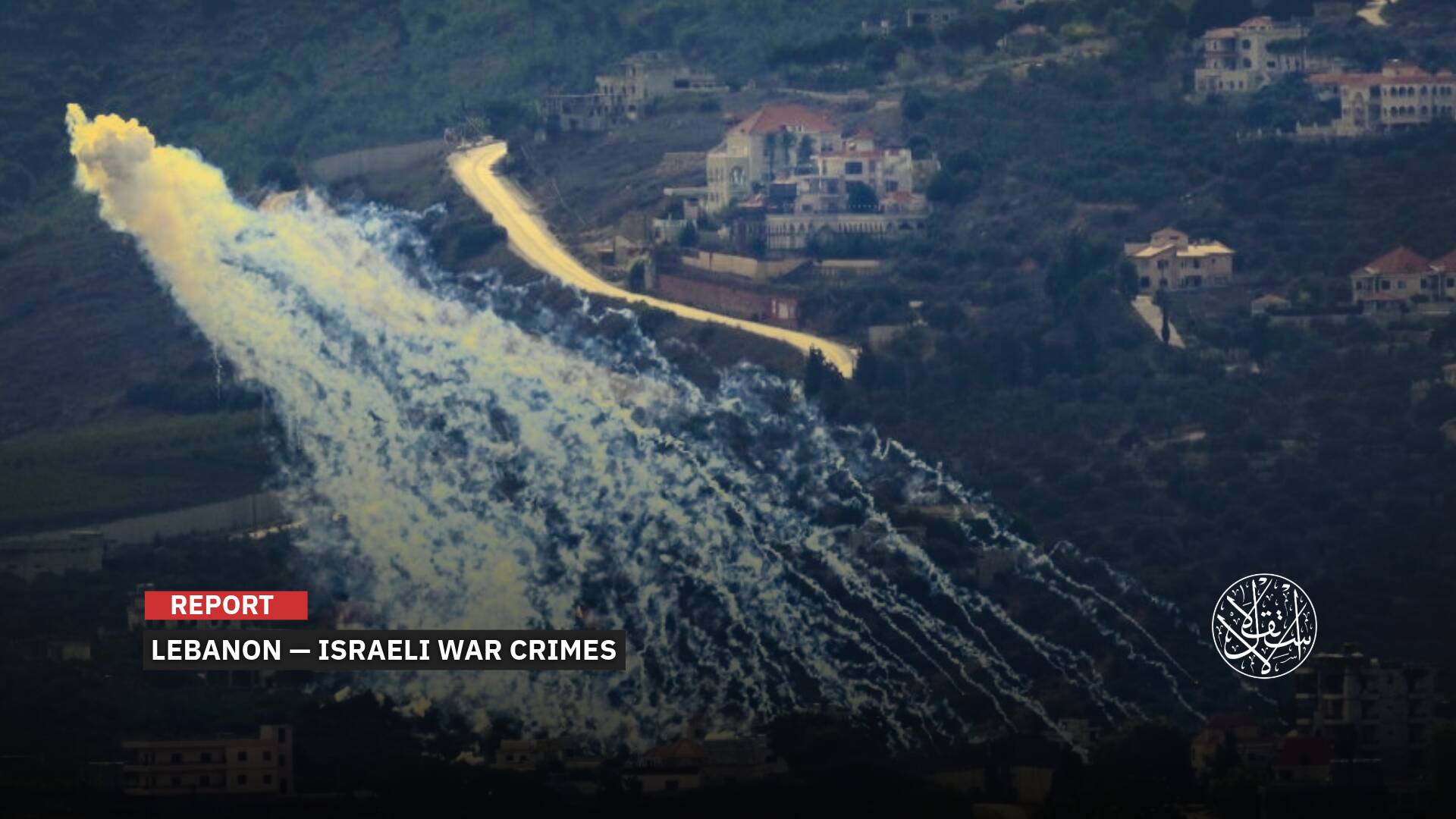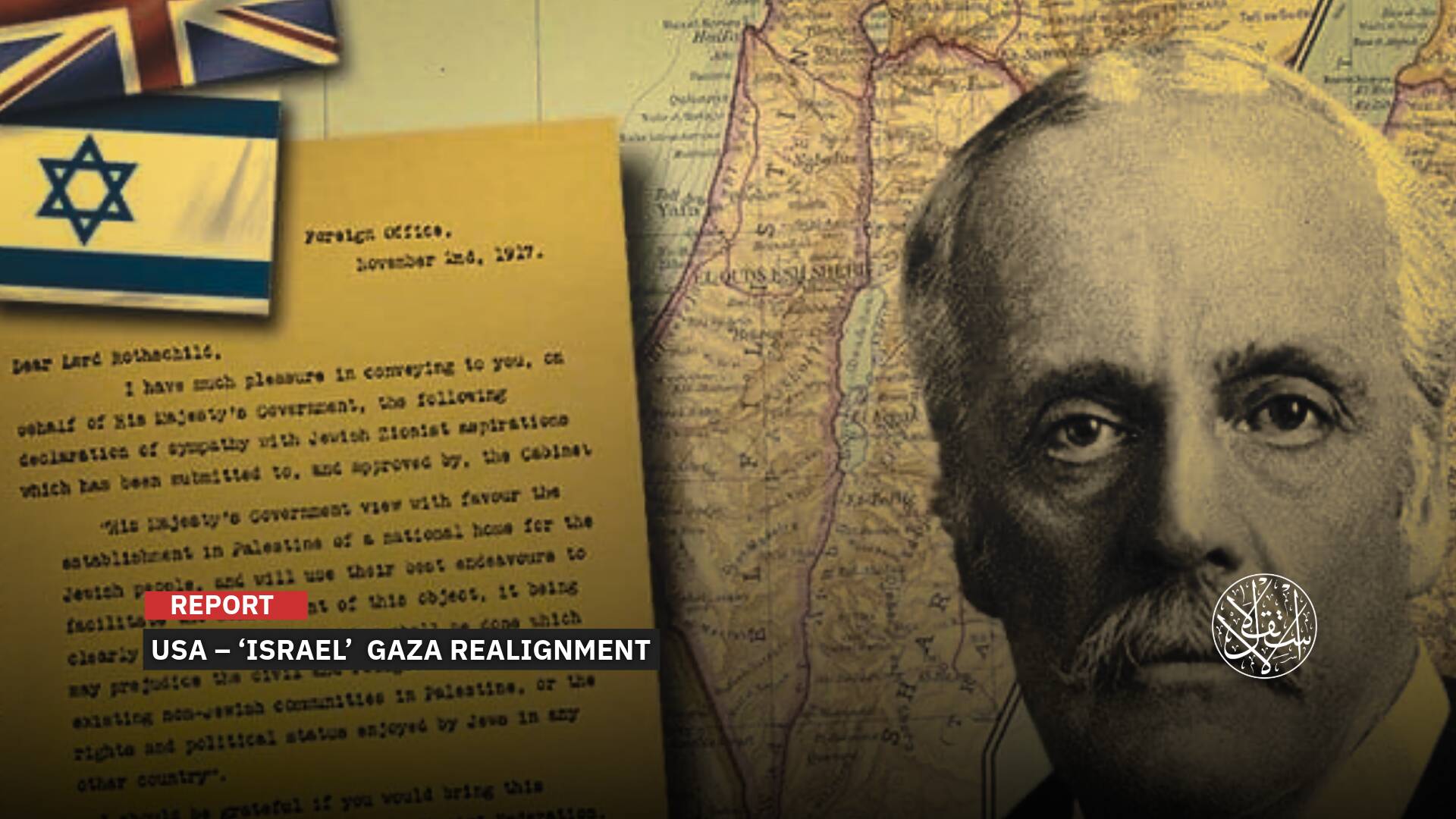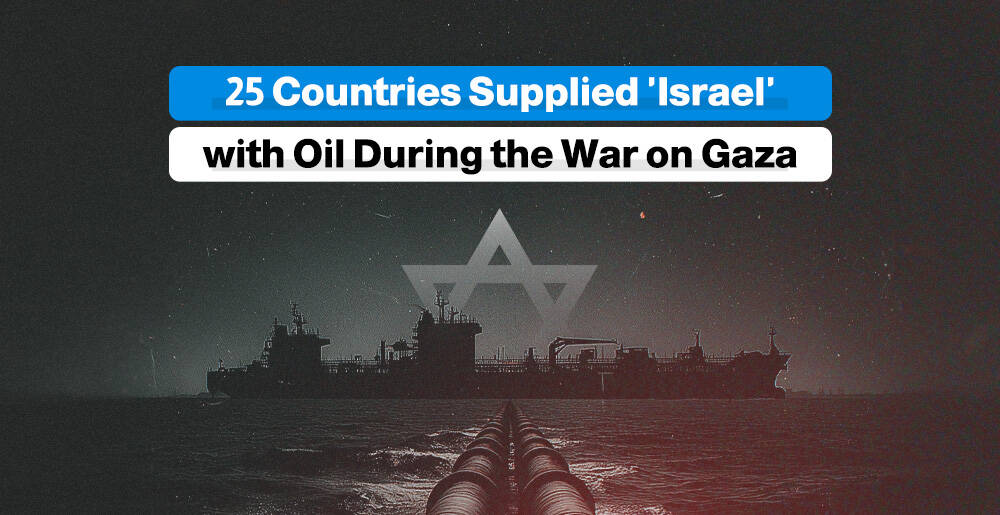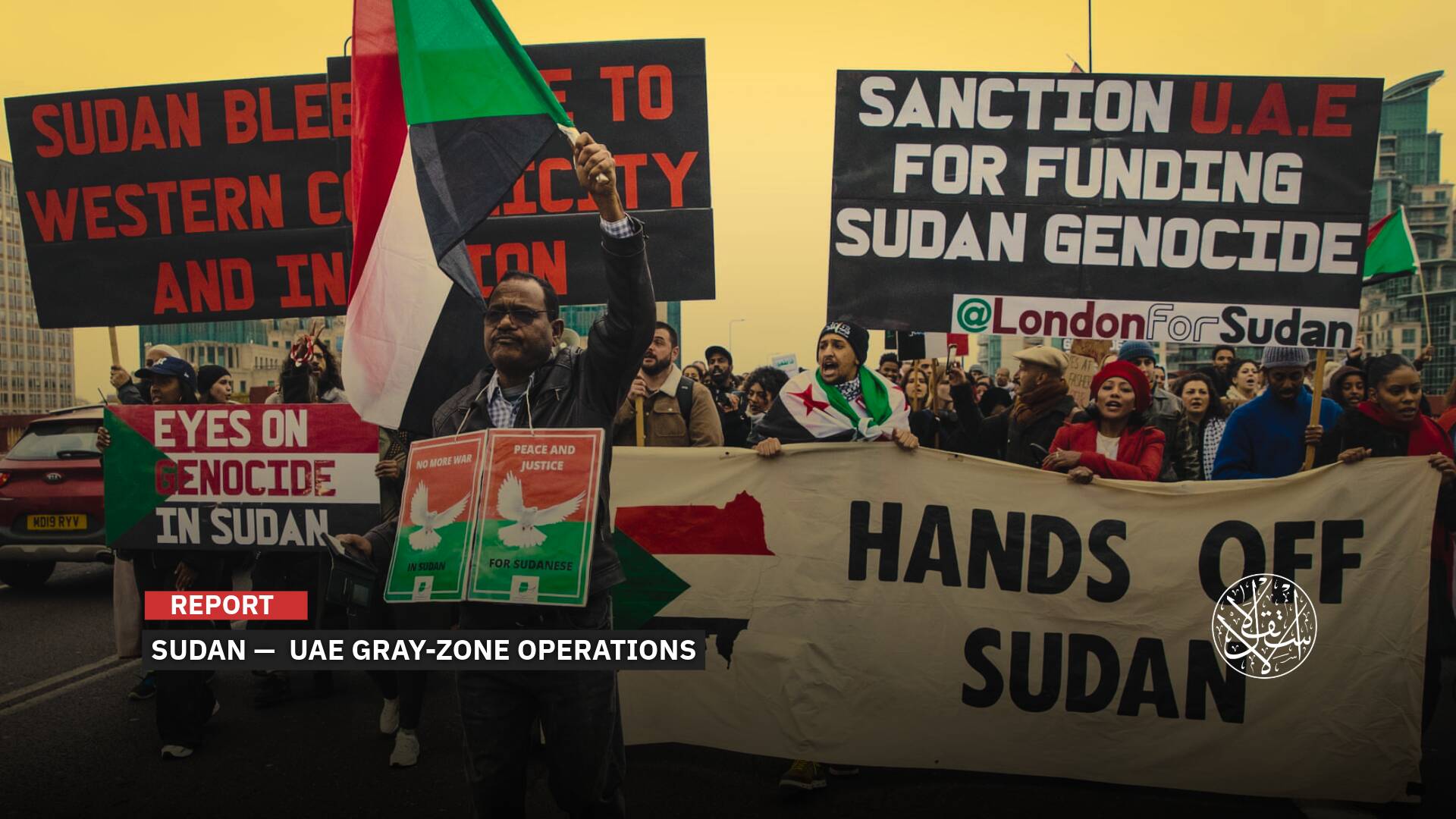Why 'Israel' Targets Lebanon-Syria Crossings

“Israel” has monitored the supply lines between Hezbollah and Iran, which run through Syria, for years.
With the onset of its ground incursion attempts in southern Lebanon in early October 2024, “Israel” began tightening its grip on the supply routes for Lebanese Hezbollah's weapons along the Syrian border.
The Israeli Occupation forces have intensified their airstrikes along both sides of the Lebanese-Syrian border, even targeting official crossings, indicating that "Israel" considers both civilian and military objectives as legitimate targets.
Attacking Borders
In a significant strike, five members of the Syrian regime forces were killed when an Israeli attack hit a military site near Kfeir Yabous in the rural Damascus area, close to the Lebanese border, on September 27, 2024.
On October 4, Israeli aircraft targeted what the army described in a statement as “an underground tunnel extending 3.5 kilometers from the Lebanese border into Syria, facilitating the transport and storage of large quantities of weapons.”
The Israeli Occupation forces stated that the “tunnel operations are managed by Unit 4400, responsible for transferring arms from Iran and its affiliates to Hezbollah in Lebanon.”
An Israeli airstrike targeting al-Masnaa area in eastern Lebanon, near the Syrian border, on October 4, resulted in the closure of the main international road between the two countries, despite the presence of six official crossings.
Al-Masnaa crossing was the primary route for individuals traveling to Syria and onward to Jordan and the Gulf countries; it also connected westward to the capital, Beirut, along the coast.

The targeting of al-Masnaa crossing, known as Jdeidet Yabous on the Syrian side, came just after the Israeli Occupation army accused Hezbollah of transporting “sensitive weaponry” for use in southern Lebanon.
Since the escalation began on September 23, 2024, more than 310,000 people have crossed from Lebanon into Syria, according to Lebanese authorities, most of whom are Syrians.
Since that date, Israeli airstrikes in Lebanon have resulted in the deaths of 1,204 people and injuries to 3,411, including many women and children. In contrast, over 1.2 million people have been displaced internally, according to official Lebanese data.
In a statement released before the airstrike, the Israeli Occupation army declared the crossing to be the “main border route for transporting Hezbollah weapons,” accusing the group of concealing “smuggling activities among trucks and civilian vehicles." It urged Lebanon to thoroughly inspect the trucks.
In response, Lebanese Minister of Public Works and Transport Ali Hamie denied the Israeli claims in a press conference on October 4, asserting that all maritime, aerial, and land crossings, including al-Masnaa, are monitored by Lebanese security forces, and trucks passing through are subject to inspection by the relevant authorities.
International organizations are pressuring “Israel” to keep the official crossings between Syria and Lebanon open and stable, as they are vital for people fleeing Israeli bombardment and for the entry of humanitarian goods into Syrian territory.
In a clear attempt to tighten its grip on Hezbollah’s supply routes from Syria, “Israel” announced in early October 2024 the assassination of Muhammad Jaafar Qasir, the leader of Hezbollah's Unit 4400 for over 15 years.
In an article published on the Hebrew website Makor Rishon, military analyst Noam Amir claimed that Unit 4400 is an elite Hezbollah unit established by its Secretary-General Hassan Nasrallah during the Syrian war to transfer personnel and technology for drone production away from Lebanon.
Amir cited security sources suggesting that this unit is also tasked with smuggling “dangerous” weapons directly to Hezbollah from the Iranian Quds Force.
‘Message to al-Assad’
Hezbollah is believed to have obtained most of its weapons from Iran via Syria, intensifying its efforts since intervening militarily alongside al-Assad’s forces in 2012 on the orders of Iranian Supreme Leader Ali Khamenei to suppress the Syrian revolution.
Since then, Hezbollah has focused on solidifying its presence on both sides of the Lebanon-Syria border, establishing the Qalamoun mountains region northwestern Damascus, adjacent to the Bekaa Valley, as its logistical and operational rear area.
Over the past decade, Hezbollah has strengthened its military positions with heavy and medium weapons, transporting significant quantities of arms and munitions while fortifying more than 20 military bases and control points.

In this context, military analyst Colonel Ismail Ayoub told Al-Estiklal, “Israel understands that the supply lines between Hezbollah and Iran pass through Syria, not just the official crossings between Lebanon and Syria, and it has been monitoring them for years.”
“Therefore, during this new period of escalation in Lebanon, Israel is militarily working to send a message to the Syrian regime to prevent any supplies of weapons or other resources from reaching Hezbollah, as well as to disrupt the movement of the party's personnel.”
During the interview, Ayoub pointed out that “despite Israel's surveillance of Hezbollah’s supply routes, the party has its own tunnels to Syria and moves through mountainous paths between the two countries.”
“Thus, the Israeli message behind targeting the crossings is to demonstrate its capability to cut off Hezbollah’s supply lines and affect the party's ability to obtain significant and quality weapons during the current conflict.”
“Israel also claims it has bombs capable of damaging even the official crossings, which serves as a pressure tactic on the Lebanese government to secure the borders, especially since the strike on the Al-Masnaa crossing created a very deep crater,” he added.
‘Supply Route’
Since Hezbollah's intervention in Syria, “Israel” has consistently monitored the Syrian-Lebanese border, seeking to tighten the noose on the Lebanese group and prevent the transfer of Iranian weapons.
This surveillance is part of an Israeli strategy aimed at crippling Hezbollah's arms transfer operations by targeting sites and shipments as soon as they arrive in Syria in recent years.
So much so that the tactics used by Hezbollah to disguise the transfer of weapons have become less effective due to the intensive aerial surveillance carried out by Israeli drones.
Israeli strikes frequently target shipments upon their arrival in Syrian territory, whether by land or air from Iran.
In late September 2024, Israeli strikes hit unofficial crossings four times connecting the city of al-Qusayr in the Homs countryside to Lebanese territory.
There were also six strikes near official crossings, including the Kfar Yabous crossing in the Damascus countryside, just a few kilometers from the Syrian-Lebanese border.

Notably, the Israeli Occupation is intensifying its military blockade against Hezbollah by land, sea, and air, following the ban it imposed on Iranian and Iraqi civilian aircraft in September 2024, preventing them from landing at Rafik Hariri International Airport in Beirut due to allegations of arms transfers to the group.
Reports indicate that all ships arriving in Lebanon are subject to control and sometimes inspection by naval forces from the United Nations Interim Force in Lebanon (UNIFIL). The Israeli navy has also been intercepting some vessels bound for Lebanon for inspection.
In March 2024, the Israeli research center Intelli Times revealed that Hezbollah is “smuggling” sensitive weapons from Syria to Lebanon using Iranian ships through the port of Latakia on the Syrian coast.
It stated that “elements of Hezbollah's Unit 4400, responsible for handling sensitive weapons through smuggling networks from Syria, transfer military equipment and resources into Lebanese territory via the port of Latakia.”
The Israeli Occupation has launched multiple attacks on the port of Latakia in recent months, targeting shipments of Iranian arms.
Sources
- Israeli strike hits key road used to flee Lebanon
- Israeli Army Declares 'Closed Military Zones' Along the Border with Lebanon and Urges Residents of Areas in Southern Suburbs to Evacuate [Arabic]
- Israeli Media Reveals Hezbollah's "Unit 4400"—Who Are They? [Arabic]
- Netanyahu: We Will Act Again If Syria Attempts to Transfer Weapons to Hezbollah [Arabic]
- Targeting Villa of a Unit Led by Maher al-Assad: A Message from Israel [Arabic]
- Why has Syria stayed out of the Israel-Hezbollah conflict?
- Hezbollah Smuggles Weapons from Syria to Lebanon on Iranian Ships via Latakia Port [Arabic]










